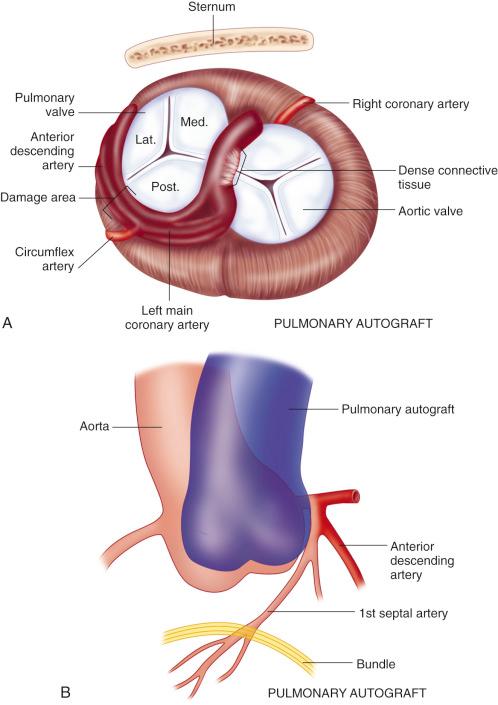Physical Address
304 North Cardinal St.
Dorchester Center, MA 02124
The Ross procedure replaces the diseased aortic valve with a viable pulmonary autograft and uses an appropriate conduit (e.g., a cryopreserved pulmonary homograft) to reconstruct the right ventricular outflow tract (RVOT).
As initially described, the autograft was placed as a scalloped subcoronary implant. The complexity of the operation and concerns regarding autograft insufficiency have limited widespread adoption of the procedure. The subsequent use of the full root technique, in addition to the increasing availability of homografts, has increased interest in the operation.
More recent concerns regarding autograft dilation and neoaortic insufficiency have led to further refinements.
Relevant surgical anatomy centers on proper enucleation of the pulmonary root and undistorted implantation into the left ventricular outflow tract (LVOT). In adults, we currently place the pulmonary autograft within an appropriately sized Dacron conduit to prevent pulmonary autograft root dilation and subsequent neoaortic insufficiency. This technique also stabilizes the sinotubular junction.
A thorough understanding of the anatomic relationships between the pulmonary and aortic valves is critical ( Fig. 17.1 ).

Become a Clinical Tree membership for Full access and enjoy Unlimited articles
If you are a member. Log in here